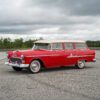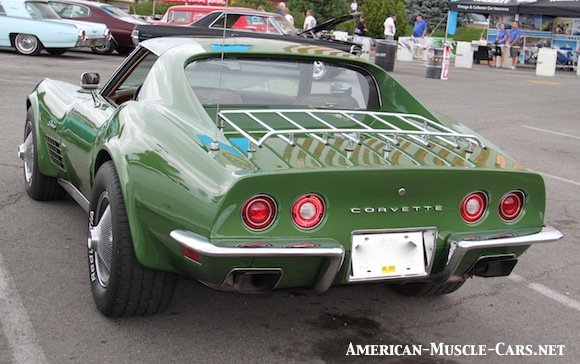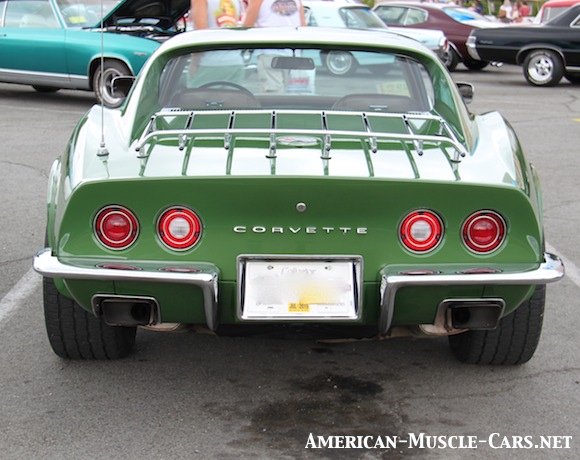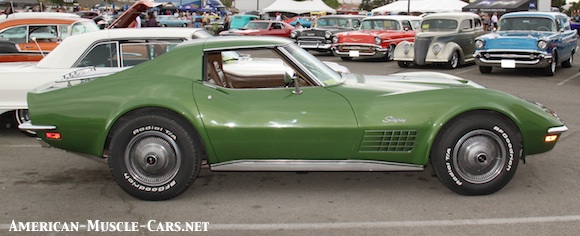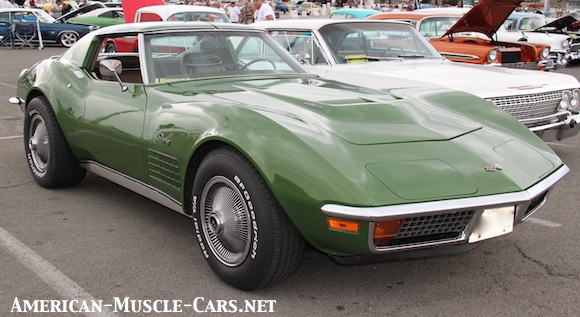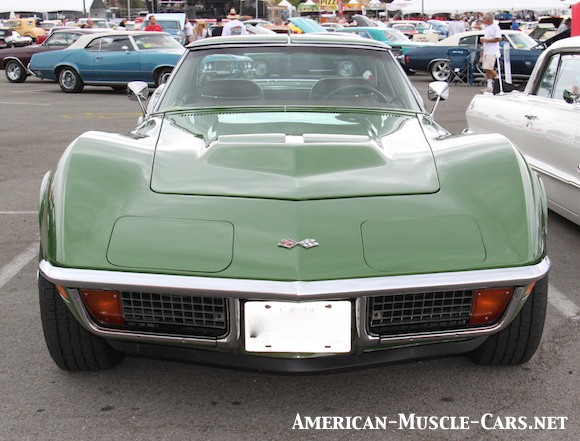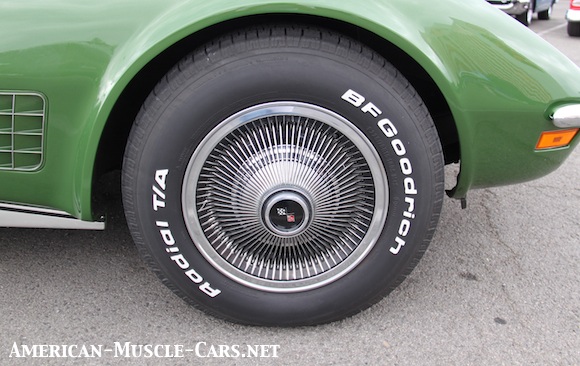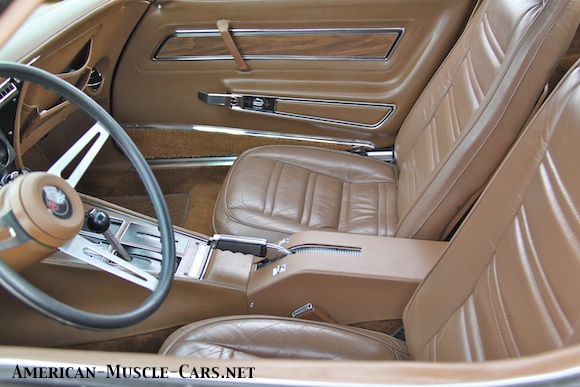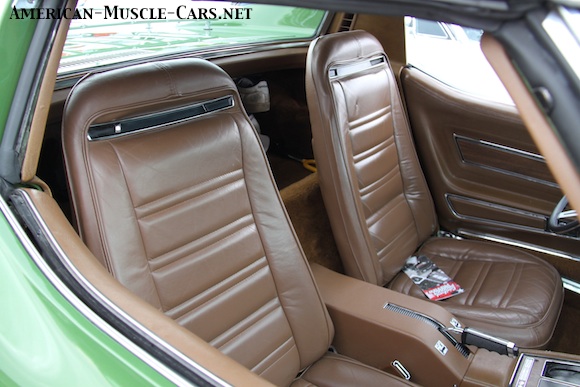1972 Chevrolet Corvette

1972 CHEVROLET CORVETTE – LAST OF THE CHROME BUMPERS
The Feds were cracking down on Detroit from all sides. Cars like the Corvette saw reduced compression ratios to cope with lower-octane, no-lead gasoline, while primitive add-on smog systems made the engines run worse and worse. All the while new fuel economy standards were forcing bigger engines out, and smaller engines in, smaller engines that were now running very poorly. And then there were all the new Federally-mandated safety regs. The new 5mph frontal impact test doomed the delicate chrome front bumperettes of the 1972 Corvette, and by 1973 they would be replaced by a large one-piece energy-absorbing plastic nosecone (nicknamed a “Rubber Bumper”) in front, with the chromed rear bumpers surviving one more year before they too would be replaced by a Rubber Bumper. That makes 1972 the last of the “Chrome Bumper Cars”, as they are referred to in common car parlance. And they were changed little from 1971. This was the last year for the removable rear window on the coupes, and for the chrome trim around the side grilles.
1972 Chevrolet Corvette INTERIOR
1972 Chevrolet Corvette ENGINES
1972 CHEVROLET CORVETTE – ENGINE OPTIONS
1972 was the year that GM switched from measuring and advertising “gross horsepower” to “net horsepower”. When measuring gross output, they would start with a specially-built blueprinted engine, with no conventional exhaust, and no accessories (alternator, AC compressor, power steering pump, etc.) and run it on the dyno. Under the new “SAE Net” standard, they used a production engine, with all accessories running, and a normal exhaust system in place. Thus, the same engine would produce a significantly lower horsepower number under the “Net” protocol. So, output figures are down from the year before, and that makes it difficult to tell just what the true performance of these engines was, except for the fact there one can definitely feel the difference “in the seat of the pants”. There is no question that performance was off from the year before. That being said, there were essentially 3 engines to choose from. The base Corvette engine was a 200hp 350 small block V8, due in part to its 8.5:1 compression ratio. Next up was the LT1 350 with 9.0:1 compression and 255 hp. The top-line engine was the LS5 big block 454 V8 rated at 270 hp. For the 1972 Chevrolet Corvette, the ZR1 option package was an optional high performance engine package available only on the LT1. It was the highest-priced option on the list that year at $1,010, and only 20 were built.

1972 Chevrolet Corvette SPECIFICATIONS
| Production (27,004)
Serial Numbers Base Price Wheelbase Track, F/R Overall Length Overall Width Overall Height Ground Clearance Wheel Size Tire Size ENGINE SPECS: Engine Type Displacement Engine Family Bore & Stroke Block Material ENGINE OPTIONS: |
CONVERTIBLE
6,508 1Z67X2S500001-1Z67X2S527004 $5,296.00 98.0″ 58.7″ / 59.4″ 182.5″ 69.0″ 4.5″ 8″ X 15″ F70-15 OHV 90-degree V8, 5 main bearings 350 ci / 5.7 liters Chevrolet Small Block V8 4.00″ X 3.48″ Cast Iron |
COUPE
20,496 1Z37X2S500001-1Z67X2S527004 $5,533.00 98.0″ 58.7″ / 59.4″ 182.5″ 69.0″ 47.9″ 4.5″ 8″ X 15″ F70-15 OHV 90-degree V8, 5 main bearings 454 ci / 7.4 liters Chevrolet Big Block V8 4.251″ X 4.00″ Cast Iron |
| RPO
Displacement Horsepower Torque, lb/ft Compression Fuel System |
Base LQ3
350 200 @ 4400 rpm 300 @ 2800 rpm 8.5:1 Rochester Q-jet |
LS5
454 270 @ 4000 rpm 390 @ 3200 rpm 8.5:1 Rochester 750 Q-jet |
LT1
350 255 @ 5600 rpm 280 @ 4000 rpm 9.0:1 Holley 4-bbl Aluminum Intake 2.5″ Dual Exhaust |


